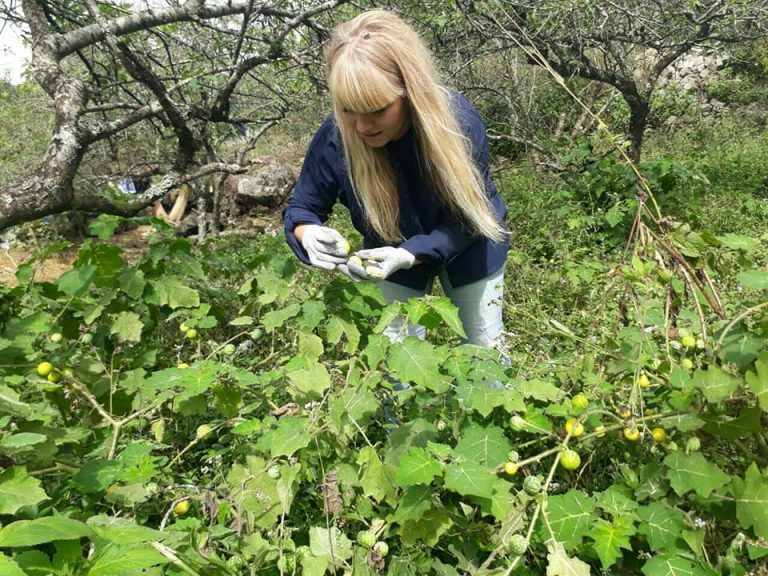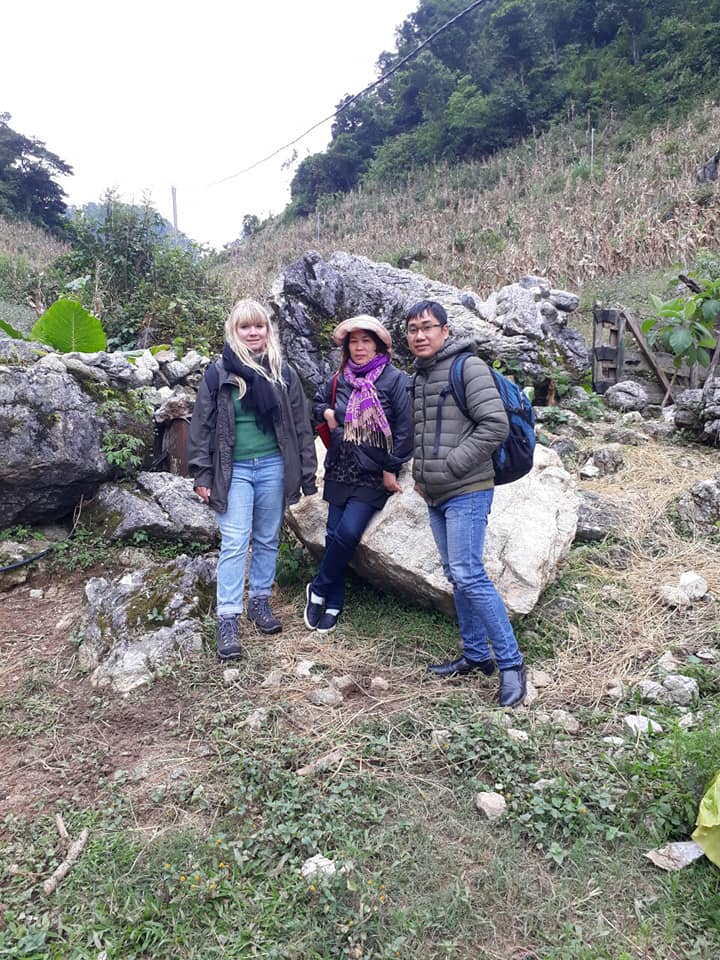Beijing, once among the most polluted cities globally, has significantly improved its air quality over the past two decades, with its experience possibly providing Hanoi with valuable insights into the severe air pollution that the Vietnamese capital is enduring.

Invasive Alien Plant Species in Vietnam: A case study of Solanum viarum in Hang Kia – Pà Cò
“Invasive Alien Plant Species in Vietnam: A case study of the prevalence, invasiveness and impacts of Solanum viarum in Hang Kia – Pà Cò nature reserve in Hòa Bình, Vietnam” is Master’s thesis conducted by Luna Naja Rosendal Katz, a M.Sc student from Roskilde University, Denmark. She had carried out 3-month field research in Van Ho district of Son La province in 2018 with support from PanNature‘s field team.
“I want to thank the local NGO, PanNature, who took me in during the study, helped me get a research permit as well as helped me a great deal before my arrival to the field. I specifically want to thank the director of PanNature, Mr. Nguyen Trinh Le, who decided to invite me to Vietnam and Mr. Nguyen Duc To Luu, who helped me plan my research and carry out experiments in the field. Mr. Thang and Mr. Liem, the two field officers who lived at the field office in Vân H?, helped me narrow down my study area, introduced me to the rangers and government officials in Hang Kia – Pà Cò nature reserve and helped me build the setup for my germination experiment. In addition to practical help, they also cooked for me several times a day, took me around the area for different events and dinners and became my friends during my three month stay in Vân H?. I am forever grateful for their hospitality and warm personalities, which made me feel at home, so far from home.” – Luna wrote in Acknowledgments of the thesis.

Abstract of the thesis
Biological invasions of alien species have become a major environmental problem, threatening biodiversity and ecosystems worldwide. During the last decade, Invasive Alien Species (IAS) have progressively come more into focus in Vietnam; however, the knowledge of IAS is lacking and the management efforts unclear.
Invasive alien species in Vietnam is the main topic of this thesis, which investigates the case of the exotic herbaceous shrub Solanum viarum, which grows unmanaged and undetected in Hang Kia – Pà Cò nature reserve (HKPC) in Hoá Bình Province, Vietnam. Solanum viarum has been growing in the reserve for decades, but to this date, there is no research to be found on the prevalence, spread, and impacts of S. viarum in Vietnam. With the problem formulation: “To what extent does Solanum viarum exhibit invasive behavior in Hang Kia – Pà Cò nature reserve and why are exotic plants like Solanum viarum allowed to grow and spread unmanaged and undocumented in Vietnam?”, this is an interdisciplinary study which utilizes theories and methods from the disciplines: biology and political science.
The main objective in the biological part of this thesis, was to assess the status of the invasion by estimating the cover and distribution of S. viarum in HKPC. From October to December 2018, 111 50-m line-transects were placed within the three communes Hang Kia, Pà Cò and Tan Son. By conducting vegetation surveys with the point-intercept method, I found the average cover of S. viarum in the study area to be 10.5 percent. The highest mean covers were found in the three unmanaged vegetation types; ‘grassland’ (13.9 percent), ‘roadsides’ (12.7 percent) and ‘poor forest/forest margins’ (12.5 percent). In the managed vegetation typesthe mean covers were 10 percent in ‘gardens and plantations’ and 5.5 percent in ‘maize stover fields’. By testing the correlations between S. viarum cover (%), altitudes and soil pH values, I found that the germination and growth of S. viarum is unaffected by the altitudes (551-1,371 m) and soil pH values (5-7) found in the three communes of HKPC.
The second objective of the biological part of this thesis was to assess the invasiveness of S. viarum by investigating its ability to reproduce. Through seed counts, fruit counts and a germination test, I found that an average S. viarum plant in HKPC produces 39,521.5 seeds/yr. and that 96.4 percent of the seeds were viable and germinated. Both the seed production and seed viability are relatively high, compared to other invasive species.
The third objective of the biological part of this thesis was to determine the impacts of the invasion on the species richness and the total vegetation cover, as well as the impacts as they are perceived by the local farmers in HKPC. Neither the species richness nor the total vegetation cover appeared to be affected by the abundance of S. viarum; however, interviews with ten local farmers revealed rising experienced impacts from the growth and spread of S. viarum. According to the farmers, the plant highly affects the quality of the pastures, it causes serious health-issues to their livestock which consumes the fruits and the spread into their cultivated fields requires time- and labor-intensive weeding practices.
I can thus conclude that S. viarum has become invasive in HKPC and should be considered a threat to other parts of Vietnam with similar ecological conditions. The political part of this thesis first aimed to outline the legislative development of the IAS management in Vietnam. An analysis of six national legislative documents revealed that Vietnamese legislation regarding the IAS management is characterized by unspecific goals and undefined allocation of resources. Because all responsibilities of implementing the IAS management is decentralized to the local authorities, the success of detecting and managing biological invasions highly depends on the ecological circumstances and the available resources within the individual provinces.
With Vietnam being legally bound to the Convention of Biological Diversity (CBD), the second objective of the political part of this thesis was to determine whether the Vietnamese legislation complies with the CBD guiding principles for IAS management: 1) scientific research, 2) prevention, 3) early detection & rapid response and 4) eradication, containment or control. An analysis of the legislative documents together with interviews with five forest rangers from HKPC, revealed that the legislation to some extent has adopted the second, third and fourth CBD guiding principle, while completely neglecting the first: ‘scientific research’. The lack of scientific research as well as knowledge coming from other sources such as individuals living in the invaded areas, results in insufficient efforts towards preventing, detecting and controlling the biological invasions.
Download full thesis here.



